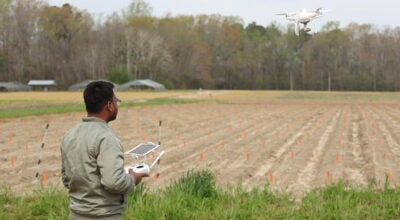River Talk on aquifer concerns
Published 10:04 pm Thursday, October 19, 2017
A $1.1-billion initiative could help restore dwindling groundwater in Southeast Virginia and improve water quality in the Hampton Roads area, attendees at a special presentation learned on Tuesday.
Hampton Roads Sanitation District General Manager Ted Henefin spoke about the issues for the Potomac Aquifer at the latest River Talk in Suffolk.
The community forum arranged by the Nansemond River Preservation Alliance and held at the Crittenden, Eclipse and Hobson Ruritan Hall on Eclipse Drive was an open invitation for citizens to learn more about the critical concerns for the Potomac Aquifer and local waterways, and HRSD’s solutions for those issues.
“It’s important to have these forums in the neighborhoods of the waterways and involve the people that live on them,” said Suffolk River Heritage chairman Karla Smith. “We have a lot of concerned citizens that want to keep our waterways alive and vibrant.”
Henefin explained HRSD’s Sustainable Water Initiative for Tomorrow, a $1.1 billion program meant to reduce the amount of nutrients discharged in the James, Elizabeth and York rivers and address the dwindling groundwater levels in the primary source of groundwater throughout eastern Virginia.
Pressure in the Potomac Aquifer has declined after centuries of unsustainable water withdrawals, causing land to sink from compaction and increasing the potential for salt water contamination with the relative rise of sea levels, according to Henefin.
“It’s one of these unseen catastrophes that’s going to hit the region in the next 40 to 50 years if we don’t change our ways,” he said.
Crowder Construction Company broke ground on a $25 million SWIFT research center at the Nansemond Water Treatment Plant in March, which is expected to be completed and ready to produce up to 1 million gallons of wastewater per day this spring.
This water will be treated using carbon-based advanced water treatment and injected into the aquifer rather than discharged into the river, preventing any unwanted nutrients from affecting the water.
Henefin explained that advanced water treatment has a long precedent throughout the country, including wastewater generated by the Occoquan Watershed in northern Virginia and treated by the Upper Occoquan Service Authority.
“Indirect reuse has been happening for as long as we’ve used downstream water from someone upstream,” he said.
The audience had concerns such as how generated sludge would be disposed and if the nutrient levels of treated water would be verified by an independent party.
“A lot of people don’t think about wastewater, but it’s important,” said Elizabeth Taraski, NRPA president and chief executive officer. “This is just part of us educating citizens on the importance of their roles in taking care of the environment.”
Some of the citizens were enthusiastic about the promises of SWIFT.
“It’s where we need to go for the future,” said Suffolk resident Beverly Van Straten.






